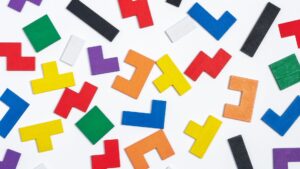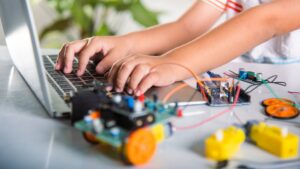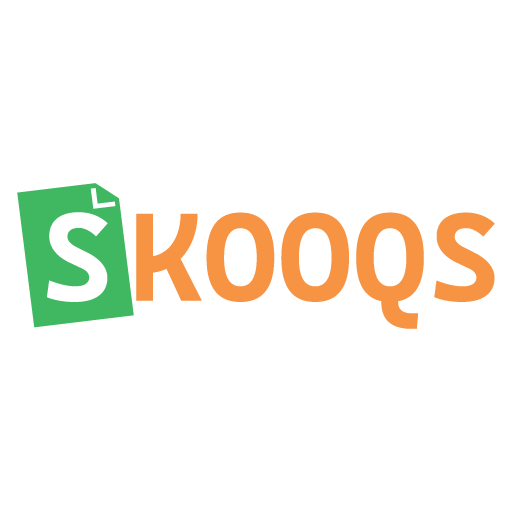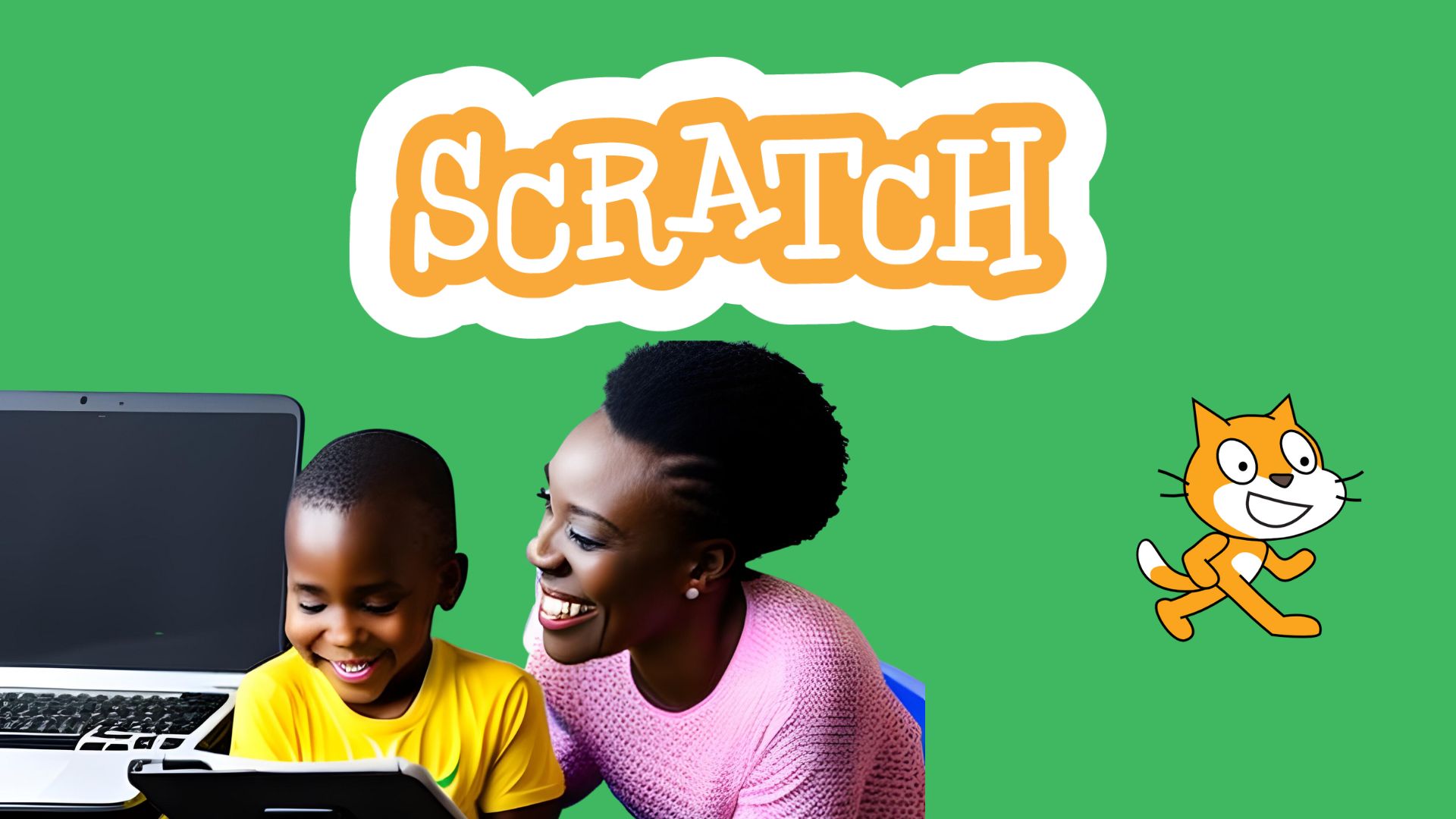In today’s digital age, it is crucial for children to develop skills that will prepare them for the future. One skill that holds immense value is programming. Learning to code not only enhances problem-solving abilities but also promotes creativity and logical thinking. Among the various programming languages available, Scratch has gained significant popularity as an ideal platform for introducing kids to the world of coding. In this article, we will explore five compelling reasons why your kids should learn Scratch programming.
Table of Contents
- Introduction: Embracing the World of Scratch Programming
- Nurturing Creativity and Imagination
- Developing Problem-Solving Skills
- Fostering Collaboration and Teamwork
- Enhancing Logical Thinking and Analytical Skills
- Building a Strong Foundation for Future Learning
- Conclusion
- FAQs
Introduction: Embracing the World of Scratch Programming
In this digital era, programming has become an essential skill, and Scratch provides an excellent entry point for kids to dive into the world of coding. Developed by the MIT Media Lab, Scratch is a visual programming language that allows children to create interactive stories, games, and animations. Its user-friendly interface and block-based coding system make it accessible and engaging for kids of all ages.
To download Scratch on your PC, click here – Download Scratch
To use Scratch on any browser, visit Scratch website
Nurturing Creativity and Imagination

Scratch programming encourages children to unleash their creativity and bring their ideas to life. With its intuitive drag-and-drop blocks, kids can design and customize their characters, backgrounds, and animations. By experimenting and exploring different possibilities, children can express their imagination and develop their storytelling abilities. Scratch empowers young minds to transform their ideas into interactive and visually appealing projects.
Developing Problem-Solving Skills

Learning Scratch programming introduces children to the fundamental concepts of problem-solving. As they create projects, they encounter challenges and learn to overcome them through logical thinking and analysis. Scratch enables kids to break down complex problems into smaller, manageable tasks. They learn to identify patterns, debug errors, and iterate on their solutions. These problem-solving skills acquired through Scratch programming are transferable to various aspects of life and future endeavors.
Fostering Collaboration and Teamwork

Scratch offers a collaborative environment where children can share their projects, receive feedback, and collaborate with others. The Scratch online community allows kids to explore and learn from a vast collection of projects created by their peers worldwide. By engaging in discussions, providing feedback, and remixing projects, children develop their social skills and foster a sense of community. Collaborative projects in Scratch also promote teamwork and encourage kids to work together towards a common goal.
Enhancing Logical Thinking and Analytical Skills

Scratch programming involves sequential thinking, problem deconstruction, and algorithmic reasoning. Kids learn to organize their code into logical sequences, make decisions based on conditions, and handle user interactions. These processes enhance their logical thinking and analytical skills. Scratch also provides a platform for experimenting with cause-and-effect relationships, enabling children to grasp the concept of variables, loops, and conditional statements. By engaging in computational thinking, kids develop a structured approach to problem-solving.
Building a Strong Foundation for Future Learning

Learning Scratch programming serves as a solid foundation for kids who aspire to explore other programming languages in the future. The logical and computational thinking skills developed in Scratch seamlessly translate to other languages like Python, JavaScript, or C++. By starting with Scratch, children gain confidence and familiarity with core programming concepts. This early exposure prepares them for advanced programming languages and opens up opportunities in fields like software development, robotics, and artificial intelligence.
Conclusion
In a rapidly evolving technological landscape, learning Scratch programming offers numerous benefits to children. It nurtures their creativity, sharpens their problem-solving skills, encourages collaboration, enhances logical thinking, and builds a strong foundation for future learning. Scratch provides an engaging and intuitive platform for kids to explore the world of coding and unleash their potential. By acquiring these essential skills, children gain a competitive edge in the digital age, positioning themselves for success in various professional fields.
FAQs
At what age can children start learning Scratch programming?
Scratch is designed to be accessible to kids as young as 8 years old. However, children as young as 5 or 6 can begin with Scratch Junior, a simplified version of Scratch that introduces basic programming concepts in a playful and age-appropriate manner.
Is Scratch programming only for aspiring programmers?
No, Scratch programming is suitable for all children, regardless of their career aspirations. It helps develop critical thinking skills, creativity, and problem-solving abilities, which are valuable in various fields, including arts, sciences, and engineering.
Can Scratch programming be learned without prior coding experience?
Yes, Scratch is beginner-friendly and does not require any prior coding experience. Its visual interface and drag-and-drop blocks make it easy for kids to understand and create projects without getting overwhelmed by complex syntax.
Are there resources available to support children learning Scratch programming?
Yes, the Skooqs website offers a wealth of resources, including tutorials, sample projects, and a vibrant online community. Additionally, many educational organizations and coding clubs provide classes and workshops dedicated to teaching Scratch programming to children.
How can parents support their children in learning Scratch programming?
Parents can encourage their children’s interest in Scratch programming by creating a supportive learning environment. They can explore Scratch projects together, offer guidance when needed, and celebrate their child’s achievements. Parents can also consider enrolling their children in coding classes or camps where they can further develop their Scratch programming skills.
Get Access Now
In conclusion, introducing kids to Scratch programming offers a myriad of advantages. It nurtures creativity, develops problem-solving skills, fosters collaboration, enhances logical thinking, and builds a strong foundation for future learning. By empowering children with these skills, they become well-equipped to navigate the ever-evolving technological landscape and unleash their full potential. So, why wait? Encourage your kids to embark on an exciting coding journey with Scratch programming today!









